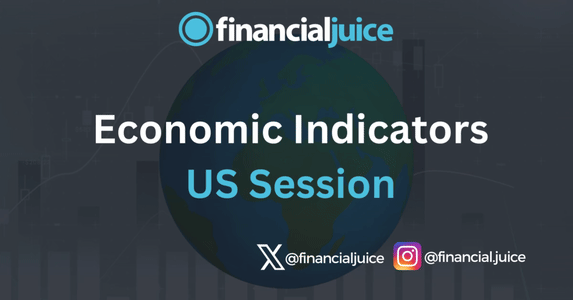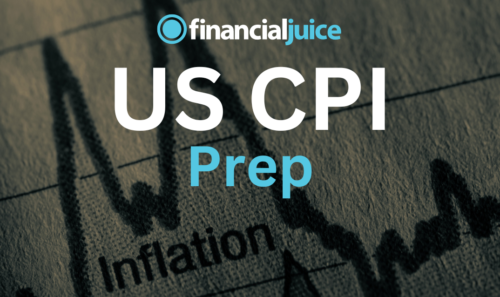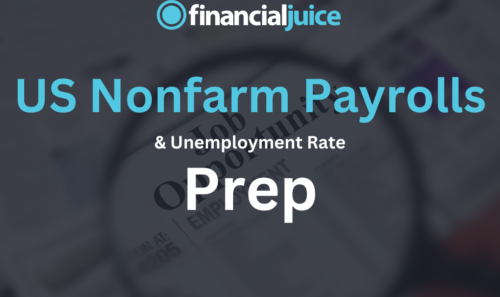
Week Ahead: Economic Indicators (US)
Hey, Traders!
For the August 19th week, here is a list of all of the major economic indicators being released during the US Session, with a brief synopsis of what they represent and what to possibly expect from the markets in reaction.
Tuesday 20th August
08:30 ET
Canadian CPI for July
The Canadian Consumer Price Index (CPI) is a monthly economic indicator reported by Statistics Canada that measures the average change over time in the prices paid by consumers for a basket of goods and services. This basket includes items such as food, housing, transportation, and healthcare.
The CPI is a key measure of inflation, reflecting changes in the cost of living and purchasing power.
What to Expect
If CPI came in lower than expected, you would be likely to see weakness in CAD and strength in Canadian stocks, as it would increase the chances that the BoC would be able to continue to reduce interest rates to stimulate growth in the economy.
The opposite would be true if it were to come in higher than expected, as this would be likely to increase the chances of the BoC holding rates at the next meeting to make sure policy is restrictive enough to keep inflation tame, as opposed to cutting them again.
Wednesday 21st August
10:30 ET
US Weekly EIA Crude Oil Inventories
The US Weekly EIA Crude Oil Inventories report, released by the Energy Information Administration every Wednesday, provides data on the amount of crude oil stored in the United States.
This report helps to assess the balance between supply and demand in the oil market.
What to Expect
An increase in inventories suggests a surplus, which can lead to lower oil prices, while a decrease indicates a deficit, potentially driving prices up.
14:00 ET
FOMC Meeting Minutes
The FOMC Meeting Minutes are detailed records of the discussions held during the Federal Open Market Committee meetings, where US monetary policy decisions are made.
Released three weeks after each meeting, the minutes provide insights into the economic outlook, considerations behind interest rate decisions, and the views of committee members on inflation, employment, and other economic factors. Investors, economists, and policymakers closely analyze the minutes to understand the Fed’s future policy direction and to gauge the potential impact on financial markets and the economy.
What to Expect
Any insights gained from this are not likely to be relevant to the recent volatility in the markets, as the FOMC did not have the data that sparked fears of a slowdown until after this meeting.
Having said that markets will still be attentive to comments from FOMC officials about their confidence on inflation return to target, as well as the employment situation.
Thursday 22nd August
08:30 ET
US Weekly Initial & Continued Jobless Claims
The US Weekly Initial & Continued Jobless Claims report, released every Thursday by the Department of Labor, tracks unemployment claims.
Initial claims measure the number of people filing for unemployment benefits for the first time, indicating new job losses.
Continued claims represent the number of people still receiving benefits after their initial claim, showing ongoing unemployment levels. These figures are key indicators of labor market health, with rising claims signaling potential economic weakness and declining claims indicating job market improvement.
What to Expect
With employment in focus at the moment, as the Fed focuses on the employment side of its mandate, higher-than-expected jobless claims numbers, indicating higher unemployment, would likely fuel fears of a deeper economic slowdown, and confirm the narrative in the markets that the Fed should have reduced rates in the last meeting when they had the chance to avoid a hard landing for the US economy.
This would likely cause weakness in US stocks and the dollar.
The opposite would be true if it came in lower than expected, as this would reduce fears of a larger slowdown, increase chances for a soft landing, and cause potential strength in US stocks and the dollar.
09:45 ET
US S&P Manufacturing & Services August Prelim PMIs
The US S&P Manufacturing & Services PMI are monthly economic indicators compiled by S&P Global that measure the activity levels in the manufacturing and services sectors, respectively.
As diffusion indices, a reading above 50 indicates expansion, while below 50 signals contraction.
US S&P Manufacturing PMI: Assesses the performance of the manufacturing sector by surveying purchasing managers about new orders, production, employment, supplier delivery times, and inventory levels.
US S&P Services PMI: Evaluates the services sector by surveying purchasing managers on factors like new business, employment, input prices, and business expectations.
What to Expect
With the broader economy in focus as opposed to the path of monetary policy, the markets are going to be looking for signals on employment and demand for goods and services in this report.
Higher than expected PMIs would increase the chances for a soft landing, especially if the employment breakdown in the report is positive, as this indicates there is still enough demand to feed into corporate profits and overall US growth, which would be likely to cause strength in US stocks and the dollar.
The opposite is likely true if it were to come in lower than expected.
10:00 ET
US Existing Home Sales for July
US Existing Home Sales is a monthly economic indicator reported by the National Association of Realtors (NAR) that tracks the number of previously owned homes sold during the month.
This data includes single-family homes, condos, and co-ops. It provides insights into the housing market’s health, consumer demand, and overall economic conditions.
An increase in existing home sales suggests strong housing demand and economic growth, while a decline may indicate a cooling market or economic challenges.
What to Expect
Housing data has not historically gotten meaningful reactions since the Fed’s tightening cycle began, but with the easing phase looming with interest rate cuts on the horizon, areas of the economy that can affect growth and underline broader economic activity, like housing, may be more in focus.
That being the case, if existing home sales comes in higher than expected, you could see some strengthening in US stocks and the dollar, and the opposite could be true if it were to come in lower than expected.
Friday 23rd August
10:00 ET
US New Home Sales for July
US New Home Sales is a monthly economic indicator released by the Census Bureau and the Department of Housing and Urban Development (HUD).
It measures the number of newly constructed single-family homes that were sold during the month.
This data provides insights into the demand for new housing and the overall health of the housing market.
Rising new home sales indicate strong consumer confidence and economic growth, while a decline may signal a slowdown in the housing market or broader economic concerns.
What to Expect
Housing data has not historically gotten meaningful reactions since the Fed’s tightening cycle began, but with the easing phase looming with interest rate cuts on the horizon, areas of the economy that can affect growth and underline broader economic activity, like housing, may be more in focus.
That being the case, if existing home sales comes in higher than expected, you could see some strengthening in US stocks and the dollar, and the opposite could be true if it were to come in lower than expected.





